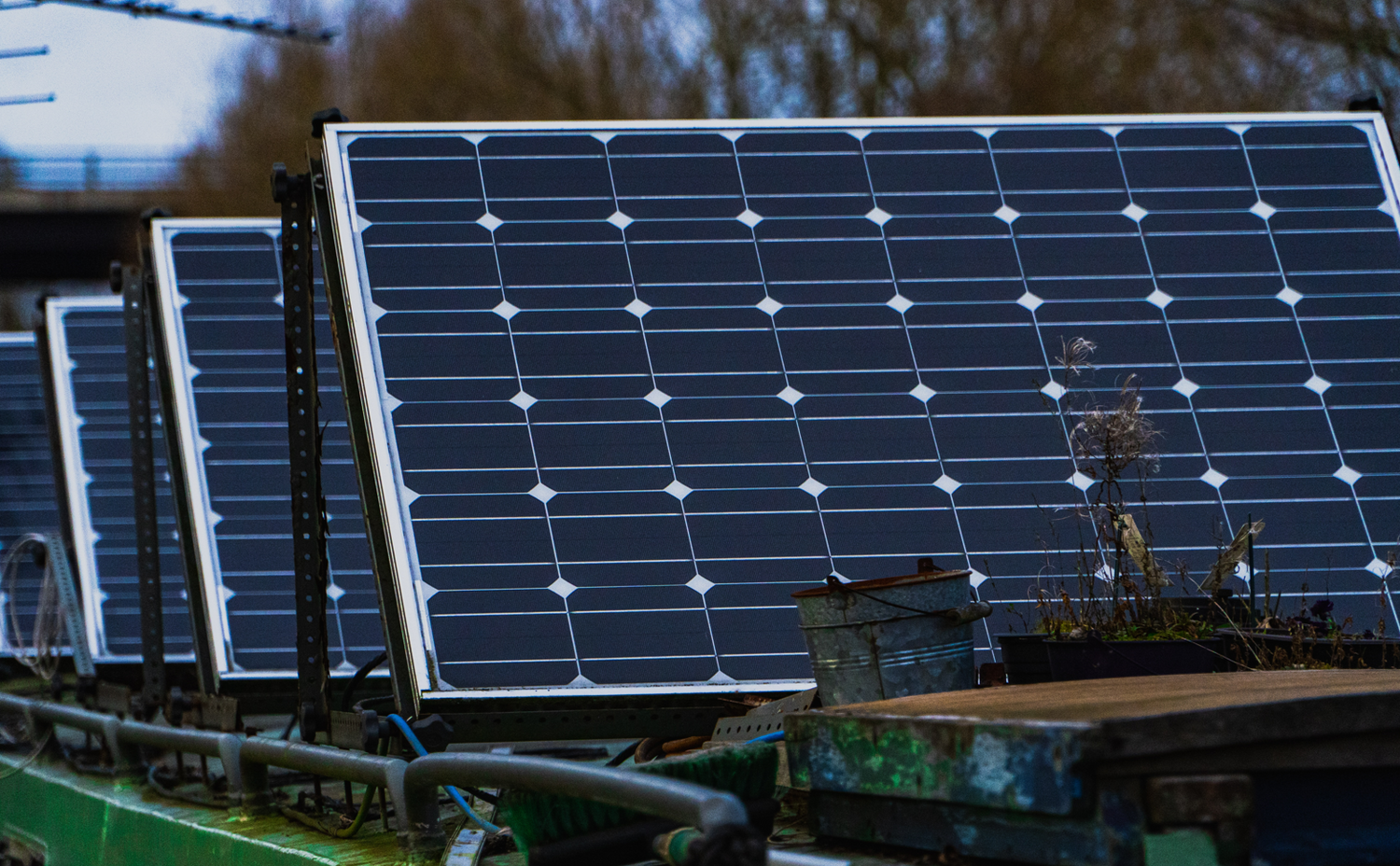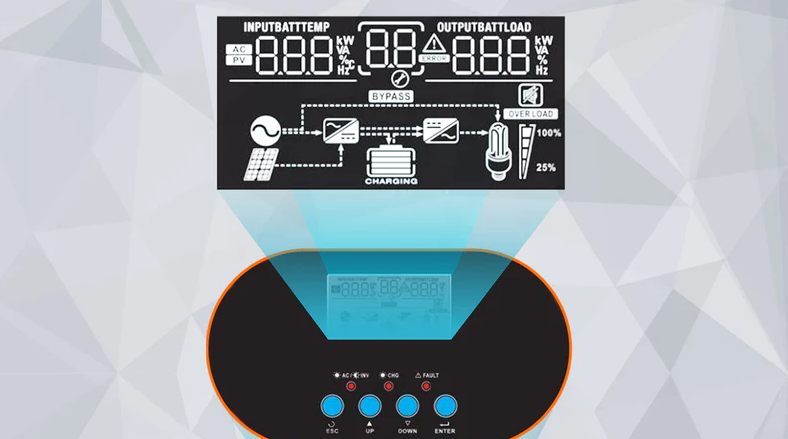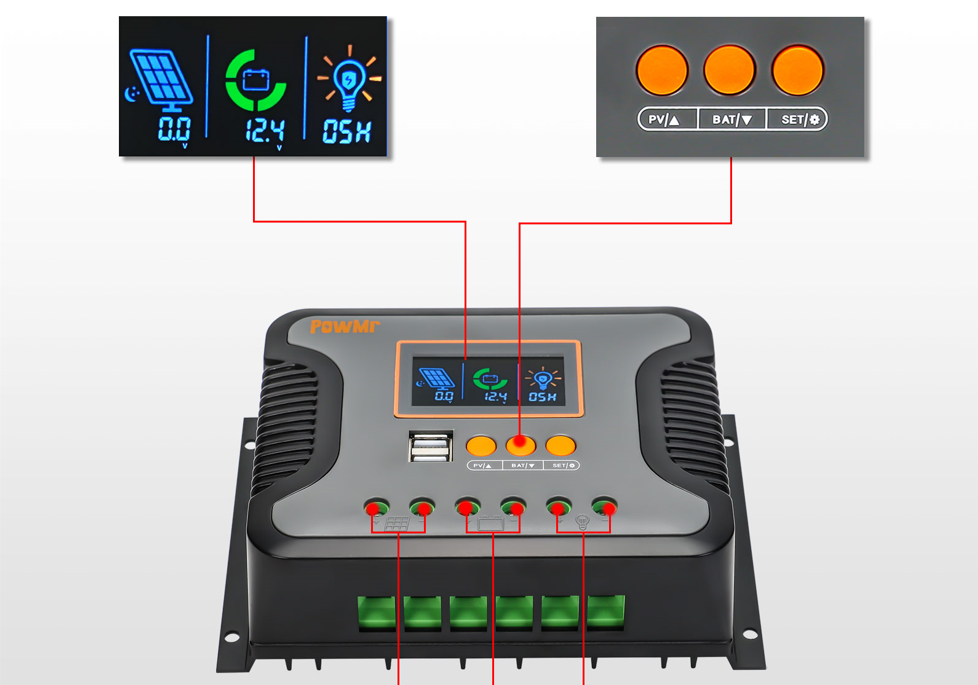A แผงโซลาร์เซลล์ 300 วัตต์ ที่มีการแผ่รังสีเต็มที่สามารถทำงานได้กับโหลด AC คงที่ 270 วัตต์ โดยคำนึงถึงการสูญเสียของอินเวอร์เตอร์ 10% ซึ่งรวมถึงอุปกรณ์ต่างๆ เช่น เครื่องปั่น, คอมพิวเตอร์ตั้งโต๊ะ, เครื่องดูดฝุ่น, และลู่วิ่ง แผงโซลาร์เซลล์ 300 วัตต์ยังสามารถทำงานกับตู้เย็นขนาดเล็กที่ใช้แบตเตอรี่ลิเธียม 120 Ah ได้อีกด้วย.
แผงโซลาร์เซลล์ 300 วัตต์ผลิตพลังงานได้เท่าไหร่?
ก่อนที่จะคำนวณว่าสิ่งใดจะทำงานได้กับแผงโซลาร์เซลล์ขนาด 300 วัตต์ เราจำเป็นต้องเข้าใจพลังงานในหน่วยวัตต์-ชั่วโมงที่มันสามารถผลิตได้และภายใต้เงื่อนไขใด
"ฉันจะมุ่งเน้นไปที่พลังงานในวัตต์-ชั่วโมงที่แผงโซลาร์เซลล์ขนาด 300 วัตต์สามารถผลิตได้ แทนที่จะเป็นพลังงานทันทีในวัตต์ นี่เป็นค่าที่มีประโยชน์มากกว่าสำหรับการจับคู่การผลิตของแผงกับโหลด."
ข้อมูลจำเพาะของแผงโซลาร์เซลล์ 300 วัตต์
สเปคทางไฟฟ้าที่สำคัญของแผงโซลาร์เซลล์มีดังนี้:
- แรงดันไฟฟ้าเปิดวงจร (Voc): วัดด้วยมัลติมิเตอร์ที่ขั้ว + และ -
- กระแสลัดวงจร (Isc): วัดด้วยมัลติมิเตอร์ออนไลน์ที่มีสายเคเบิลลัดวงจร
- แรงดันไฟฟ้าสูงสุด (Vmp) – โวลต์ที่สร้างพลังงานสูงสุด
- กระแสไฟฟ้าสูงสุด (Imp): กระแสไฟฟ้าที่ไหลเมื่อมีการผลิตพลังงานสูงสุด
แผงโซลาร์เซลล์ 300 วัตต์ผลิตกี่กิโลวัตต์ชั่วโมง?
ด้วยค่าความเข้มของแสงเฉลี่ย 4 ชั่วโมงพีคของแสงแดด แผงโซลาร์เซลล์ขนาด 300 วัตต์ solar panel ผลิตพลังงานไฟฟ้าได้ 1.2 กิโลวัตต์ชั่วโมง (kWh) ต่อวัน หรือ 438kWh ต่อปี จำนวนที่แน่นอนจะแตกต่างกันไปขึ้นอยู่กับตำแหน่งที่ตั้งของความเข้มของแสง หากคุณจ่ายไฟให้กับอุปกรณ์ AC ให้หักค่าใช้จ่ายของอินเวอร์เตอร์อย่างน้อย 10% ขึ้นอยู่กับขนาดและประสิทธิภาพของอินเวอร์เตอร์.
คุณจะพบกับคำว่า Maximum Power Point ซ้ำแล้วซ้ำอีกเมื่อคุณทำการวิจัยเกี่ยวกับการผลิตพลังงานแสงอาทิตย์ นี่คือเมื่อแรงดันไฟฟ้าและกระแสของแผงอยู่ในค่าที่เหมาะสมที่สุดสำหรับพลังงานสูงสุด.
พลังงาน (วัตต์) = โวลต์ x แอมป์
สิ่งนี้เกิดขึ้นเฉพาะภายใต้เงื่อนไขบางประการเท่านั้น:
- เมื่อการฉายรังสีเพียงพอ (มีพลังงานแสงอาทิตย์เท่าไหร่)
- เมื่อคุณลักษณะการโหลดตรงกับความต้องการของแผง
การแผ่รังสีจากดวงอาทิตย์และการผลิตพลังงาน
ผลผลิตของแผงโซลาร์เซลล์ขึ้นอยู่กับการแผ่รังสีอย่างมากและมีความแตกต่างกันอย่างมากตลอดทั้งวัน: สูงสุดในไม่กี่ชั่วโมงรอบเที่ยงวันและต่ำมากในช่วงเช้าตรู่หรือเย็น.
ด้วยเหตุนี้ ผู้เชี่ยวชาญด้านพลังงานแสงอาทิตย์จึงพูดถึงจำนวนชั่วโมงเฉลี่ยของการแผ่รังสีสูงสุดในหนึ่งวัน และใช้ข้อมูลนี้ในการคำนวณพลังงานเฉลี่ยที่แผงโซลาร์เซลล์ส่งมอบในช่วงเวลา.
แผงโซลาร์เซลล์ 300 วัตต์จะผลิตพลังงานได้เท่าไหร่?
ในแง่ของพลังงาน ปริมาณพลังงานสามารถคำนวณได้ในลักษณะนี้:
การจัดอันดับแผงสูงสุด x ชั่วโมงแสงแดดสูงสุด/วัน = วัตต์-ชั่วโมงต่อวัน
ถ้าเรานำฮูสตันเป็นตัวอย่าง แผงโซลาร์เซลล์ขนาด 300 วัตต์จะผลิต:
300 วัตต์ x 4,254 = 1,276kWh/วัน = 465.7kWh/ปี
แผงโซลาร์เซลล์ 300 วัตต์มีกี่แอมป์?
แอมป์สูงสุดของแผงโซลาร์เซลล์ 300 วัตต์เรียกว่า Imp (กระแสที่กำลังสูงสุด) และจะมีการระบุโดยผู้ผลิตในแผ่นข้อมูลจำเพาะ กระแสเฉลี่ยอยู่ที่ 9.5 แอมป์ DC สำหรับแผงโซลาร์เซลล์ 300 วัตต์ที่มี Voc 42 โวลต์ กระแสที่เทียบเท่าของอุปกรณ์ AC (สหรัฐอเมริกา) ประมาณ 3 แอมป์.
วิธีที่ง่ายที่สุดในการทราบว่าแผงโซลาร์เซลล์ 300 วัตต์สามารถส่งมอบกระแสไฟฟ้าได้กี่แอมป์คือการอ่านแผ่นข้อมูลสเปค ค่าเฉลี่ยประมาณ 9.5 แอมป์ DC.
ในแง่ของกระแสสลับ เราต้องกำจัดการสูญเสียจากอินเวอร์เตอร์อย่างน้อย 10 เปอร์เซ็นต์และสมมติว่าพาเนลกำลังส่งพลังงานเต็มที่.
ถ้า Vmp เท่ากับ 36 โวลต์ แล้วสำหรับโหลด AC ในสหรัฐฯ เราจำเป็นต้องลดกระแส DC โดยความแตกต่างในแรงดัน DC/AC สมการง่ายๆ อาจเป็น:
AC แอมป์ = DC แอมป์ x 36/120 = 9.5 x 0.3 = 2.85 AC แอมป์
โปรดจำไว้ว่าประสิทธิภาพของอินเวอร์เตอร์จะแปรผันตามโหลด และฉันเดาว่ามันอยู่ที่ 90 เปอร์เซ็นต์เมื่อโหลดเต็มที่ อย่างไรก็ตาม สิ่งนี้ยังขึ้นอยู่กับขนาดของอินเวอร์เตอร์ที่ใช้.
กระแสชาร์จไฟฟ้ากระแสสลับสูงสุดสุดท้าย = 2.85 – (2.85*10/100) = 2.56 แอมป์ AC
ขนาดอินเวอร์เตอร์เท่าไหร่สำหรับแผงโซลาร์เซลล์ 300 วัตต์?
เมื่อมองแวบแรก คุณอาจคิดว่าคำตอบคือ 300 วัตต์อย่างชัดเจน แต่การประเมินความต้องการของคุณให้สูงกว่าที่จำเป็นนั้นดีกว่า aus สำหรับเหตุผลหลายประการ.
ลองพูดว่า ตัวอย่างเช่น คุณกำลังใช้ตู้เย็นหรือตู้แช่แข็ง มันสามารถทำงานได้อย่างสบายในที่ที่มีแสงแดดเต็มที่ เนื่องจากตู้เย็นเฉลี่ยทำงานที่ 40 ถึง 100 วัตต์อย่างต่อเนื่อง.
อย่างไรก็ตาม เมื่อคอมเพรสเซอร์ทำงานและมอเตอร์เริ่มทำงาน จะใช้พลังงานมากถึง 3 เท่าจากกระแสเกิน
การผลิตพลังงานจากแผงโซลาร์เซลล์ขนาด 300 วัตต์อาจไม่เพียงพอที่จะจ่ายโหลดนี้ โดยเฉพาะอย่างยิ่งหากแผงไม่ได้ทำงานที่กำลังเต็มที่ ซึ่งมักจะเป็นเช่นนั้น ยกเว้นในช่วง 4-5 ชั่วโมงรอบเที่ยงวัน.
ในกรณีนั้น แบตเตอรี่เป็นสิ่งจำเป็นและจะถูกเชื่อมต่อกับแผงโซลาร์เซลล์ 300 วัตต์โดยใช้ตัวควบคุมการชาร์จพลังงานแสงอาทิตย์.
ควรใช้ขนาดของตัวควบคุมการชาร์จเท่าไหร่สำหรับแผงโซลาร์เซลล์ขนาด 300 วัตต์?
กระแสเฉลี่ยที่ผลิตโดยแผงโซลาร์เซลล์ขนาด 300 วัตต์อยู่ระหว่าง 9 ถึง 9.5 แอมป์ ดังนั้น <10 แอมป์> ตัวควบคุมการชาร์จพลังงานแสงอาทิตย์ จึงทำงานได้ดี.
อย่างไรก็ตาม จะเป็นการฉลาดที่จะอัปเกรดเป็นรุ่น 30 หรือแม้แต่ 60A ในกรณีที่คุณต้องการเพิ่มความสามารถในการผลิตพลังงานแสงอาทิตย์ในภายหลัง.
ตัวควบคุม MPPT ส่วนใหญ่มีการจัดอันดับแรงดันไฟฟ้าขาเข้าที่ 60 โวลต์ ดังนั้นแผงโซลาร์เซลล์ 300 โวลต์ที่มี Voc ระหว่าง 40 ถึง 44 โวลต์จะทำงานได้
แผงโซลาร์เซลล์ 300 วัตต์สามารถชาร์จแบตเตอรี่ 12 โวลต์ได้หรือไม่?
แผงโซลาร์เซลล์ขนาด 300 วัตต์สามารถชาร์จแบตเตอรี่ 12 โวลต์ได้ และเวลาที่ใช้ขึ้นอยู่กับสถานะการปล่อยประจุของแบตเตอรี่และระดับการแผ่รังสีที่ตำแหน่งของแผงโซลาร์เซลล์.
ด้วยการมีแสงอาทิตย์ที่มีพีค 5 ชั่วโมงต่อวัน แผงโซลาร์เซลล์ขนาด 300 วัตต์จะผลิตพลังงานได้ 1,500 วัตต์-ชั่วโมงต่อวัน.
แบตเตอรี่ 100 Ah 12 โวลต์ เท่ากับ 1200 วัตต์-ชั่วโมง ดังนั้นแผงโซลาร์เซลล์ 300 วัตต์ที่มีตัวควบคุม MPPT จะชาร์จแบตเตอรี่ 100 Ah 12 โวลต์ที่หมดไฟอย่างเต็มที่ในเวลาน้อยกว่า 5 ชั่วโมง.
อย่างไรก็ตาม การที่แบตเตอรี่จะถูกปล่อยให้หมดเกลี้ยงนั้นเป็นเรื่องที่เกิดขึ้นได้ยากมาก แบตเตอรี่ตะกั่วกรดแบบลึกมักจะปล่อยประจุไปที่ 50 เปอร์เซ็นต์ของความจุเต็ม ดังนั้นชุดแผงโซลาร์เซลล์ขนาด 300 วัตต์จะสามารถชาร์จแบตเตอรี่ได้ในเวลาน้อยกว่า 2.5 ชั่วโมง



